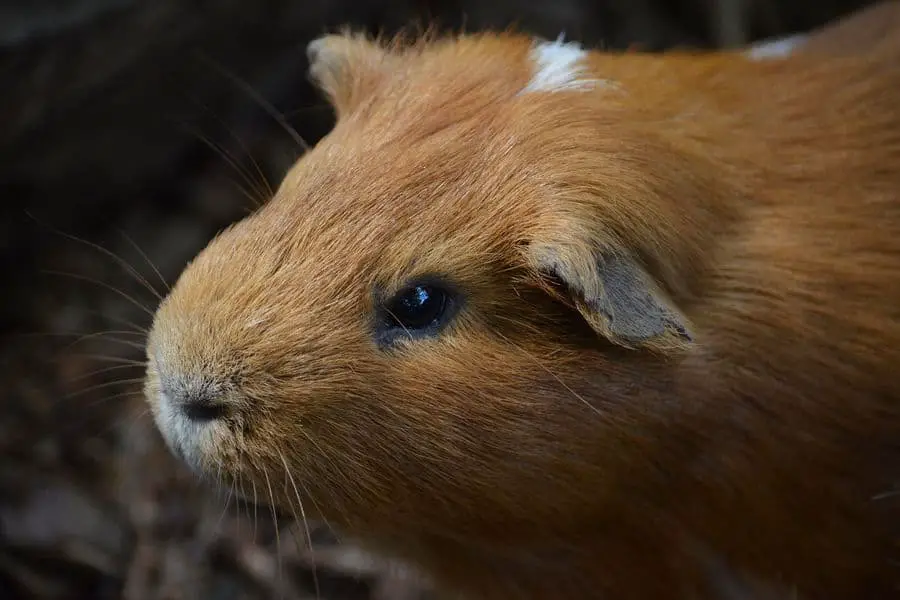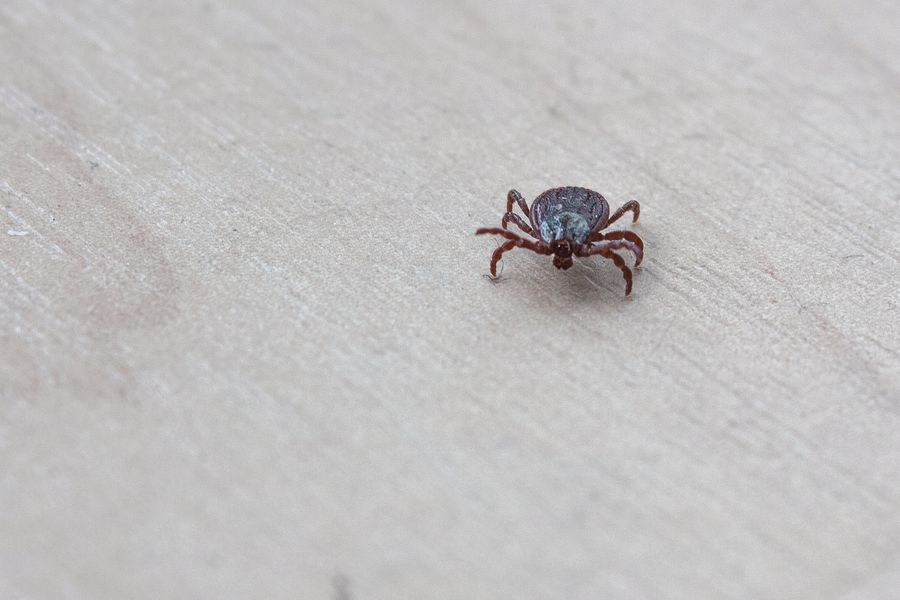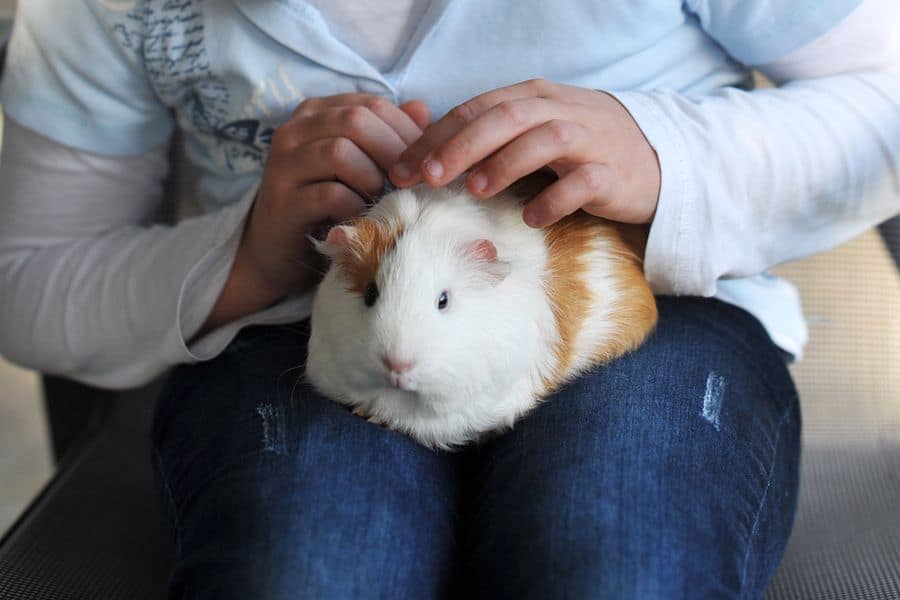Mites are parasitic insects that can cause skin problems in a guinea pig, affecting your pet’s health and way of living. However, what do mites look like on guinea pigs? For this guide, I’m explaining the signs of mite infestations in your guinea pig, along with treatments and prevention.
What Do Mites Look Like on Guinea Pigs?
While mites are too small to spot right away, they generally have pale white to yellow color. Sarcoptic mange mites can appear gray on the skin, whereas static mites tend to have a light-colored body. A heavily mite-infested guinea pig may show thick, scabby skin with yellowish to brown spots.
If your pet continuously scratches the area, you would also notice inflamed skin with blood marks. To become a responsible pet owner, it’s important that you know the different kinds of guinea pig mites, as well as the signs, effects, treatment, and prevention.
What Are the Types of Mites on a Guinea Pig?
The most common fur mites for guinea pigs are Trixacarus caviae (sarcoptic mange mite) and Chirodiscoides caviae (static mite). Mange mites are grayish or skin-colored. Meanwhile, static mites may look like dandruff, which is why they can be challenging to see in light-colored guinea pigs.
- Static mites: While this is the most common type of guinea pig mite, static mites typically don’t cause serious symptoms. They tend to live on a pet’s hair to feed on skin debris. You may notice a dust-like portion in the skin that your guinea pig tends to scratch longer.
- Sarcoptic mange mites: These mites can cause more severe effects, including major skin irritation. The mites burrow into a guinea pig’s skin, prompting your pet to bite and scratch the area, resulting in bald patches. Sarcoptic mites typically cause extreme itchiness in the groin, shoulders, neck, head, and front legs.
What Are the Symptoms of Mites on Guinea Pigs?
Guinea pigs may get fur mites from previously contaminated bedding or unclean living conditions. Moreover, it’s possible that your pet may get the mites from other infested guinea pigs. These signs can also describe what mite infestation looks like on a guinea pig.
- Excessive scratching: Frequent scratching is the first sign of mite problems, especially when concentrated on a body part.
- Hair loss: A guinea pig may start losing hair, particularly on the back and rump. Excessive scratching can also cause large bald spots.
- Skin irritation: Your pet’s excessive scratching will inflame the skin further. In effect, the skin cells will flake off like dandruff.
- Secondary bacterial infection: The skin may develop open sores that can also become infected. This is when you might also observe yellowish and crusty skin.
- Weight loss and lethargy: This is an extreme effect when a guinea pig loses appetite to eat, making it debilitated and feel depressed.
- Seizures: It’s rare for guinea pigs to experience seizures. If this happens, your pet is most likely infected with mange mites.
How Do You Treat Mites on a Guinea Pig?
Our clinic usually prescribes anti-parasitic medications to treat mites on guinea pigs. However, it’s best to schedule your guinea pig for a wellness examination in the clinic at least once a year to detect mites and provide suitable treatment.
It’s essential that we examine your guinea pig’s skin and fur for evidence of mites, bacteria, and other parasites. I would also suggest running diagnostic tests and lab work. This includes vital sign readings and blood testing to screen for infections.
I suggest hospitalization for supportive care for badly debilitated guinea pigs. This is to reduce stress while undergoing treatment.
How to Prevent Guinea Pigs From Getting Mites
You can prevent your guinea pig from having inflamed, crusty skin with bald spots due to mite infestation. These are simple ways to keep your pet safe and healthy from mites.
- Groom your guinea pig: Use a fine comb to brush your pet’s fur once or twice a week to monitor for lice, lumps, or crustiness. Take time in cutting burrs, tangles, or dead hair.
- Clean and sanitize: Adult mites can survive off the host and transfer to fabrics for some time. Thus, it’s crucial to clean and sanitize the cage, bedding, and litter trays. You should also do this to carpets and places where your pet plays.
- Provide nutritious meals: Set healthy, balanced diets to strengthen your pet’s immune system. A proper diet also keeps a guinea pig’s teeth healthy, letting it groom itself easily.
- Provide physical activities: An overweight guinea pig would have a harder time grooming itself. Put toys inside the cage or arrange tunnels and bridges to encourage movements.
- Minimize your pet’s stress levels: Stressed guinea pigs may have weaker immune systems. This can prevent your pet from fighting potential infections. Avoid stress-inducing factors like loud noises from traffic, other pets, and other environmental disturbances.
- Schedule vet visits: Guinea pigs don’t normally require vaccinations, yet it would be helpful to take your pet to the clinic for routine checkups.
Related Questions
What Are the Common Health Issues in a Guinea Pig?
Aside from mite infestation, the most common health problems in guinea pigs include respiratory infections like sneezing a lot and vitamin C deficiency. They are also susceptible to diarrhea, urinary problems, and tumors.
Can Humans Get Mites From Guinea Pigs?
Guinea pig static mites are species-specific, so there’s a minimal chance that your pet’s mites will transfer to human skin. However, the sarcoptic mange is zoonotic, which means humans can get it. If someone from your household has sensitive skin, contact with a mite-infested pet may cause skin irritation and rashes.
What Can Guinea Pigs Eat?
Guinea pigs are herbivores, so their ideal diet should consist of guinea pig hay, pelleted food, fresh vegetables, and fresh fruits. A healthy feeding schedule can be twice a day to prevent obesity. It’s also important that you provide fresh, clean drinking water.
Conclusion
It can sometimes be difficult to detect mites right away, yet the affected skin area may get thick, yellowish, and crusty. Itchiness, hair loss, and inflammation are also common signs. The best way to prevent mite infestation is to schedule regular vet checkups and set up a clean living environment.



